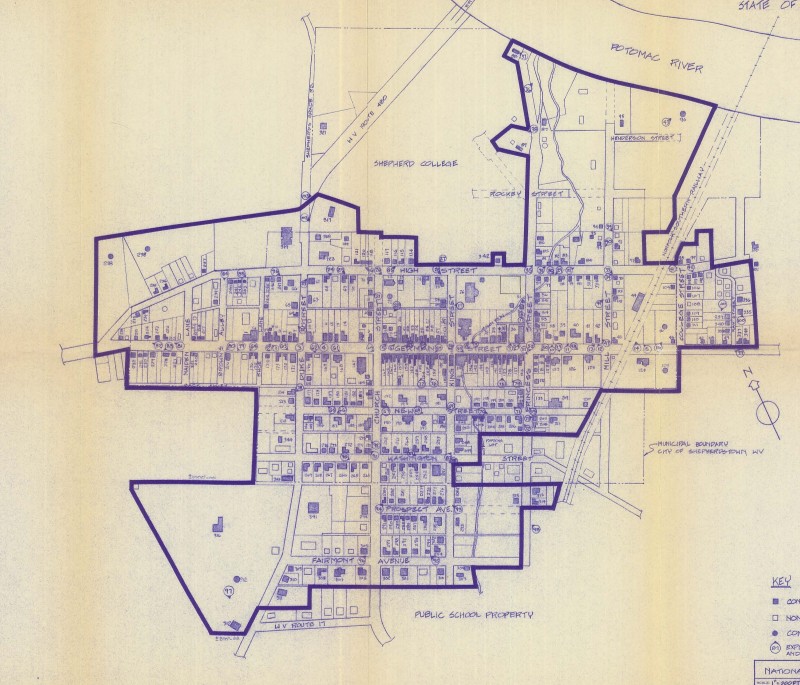This entry includes a walking tour! Take the tour.
Introduction
Text-to-speech Audio
Images
Map of Shepherdstown Historic District

Backstory and Context
Text-to-speech Audio
The natural crossing over the Potomac at Pack Horse Ford brought people through this area during and prior to the colonial period. There was an early settlement here, although the exact location has not been determined and no structures remain from it. The area of Shepherdstown begins to appear in colonial land grants, although those are often overlapping with multiple people claiming the same tract of land. Thomas Shepherd received a patent for the land in 1734 and started to lay out the town in 1762. He divided 50 of his acres into 96 lots and began selling them to individual owners with the stipulation that the owners improve the lot with buildings to meet certain specifications. The town of Mecklenburg was chartered on December 23, 1762. The town’s name was changed to Shepherdstown on January 11, 1798 to honor the town’s founder.
Besides being West Virginia’s oldest community, Shepherdstown has a lot of significant history with shipping and transportation. The location of Pack Horse Ford and shipping on the Potomac and C & O Canal placed Shepherdstown in the middle of traveling and commerce. Industries such as a brewery and brick yard were established in the 1790s. In addition, the town is famous for James Rumsey’s 1786 steam boat experiment. The first newspaper in West Virginia, the Potomac Guardian, was established in Shepherdstown in 1790. The first public school in West Virginia was established in Shepherdstown in 1849 and there was a school for Black children built in 1857, which is unusual for a slave owning state prior to the Civil War. A state normal school was established in 1871 and this became Shepherd College. Shepherdstown also served as the county seat of Jefferson County from 1866 to 1871. This temporary move away from Charles Town was a result of instability during the Civil War and Reconstruction, especially with the temporary disenfranchisement of Confederate sympathizers after the war. Jefferson County, and Shepherdstown, were largely pro-Confederate during the Civil War and retained a strong connection to Virginia even after the creation of West Virginia as a separate state.
Architecturally, Shepherdstown Historic District exhibits a progression of styles from colonial log structures to 19th and 20th century architecture. Many of the earliest structures are log buildings with Germanic influence, reflecting the population that originally settled here. A unique characteristic of the town’s architecture is the large number of late 18th and early 19th century brick buildings, which is unusual for that period. This is likely due to the establishment of a commercial brick yard in Shepherdstown before 1794. As a whole, Shepherdstown has a significant collection of 18th and early 19th century construction that is possibly the best preserved in West Virginia.
Sources
"National Register of Historic Places Inventory--Nomination Form: New Mecklenburg/Shepherdstown--Shepherdstown Historic District (boundary increase)." Accessed February 26, 2021. http://www.wvculture.org/shpo/nr/pdf/jefferson/87001205.pdf.
"National Register of Historic Places Inventory--Nomination Form: New Mecklenburg/Shepherdstown--Shepherdstown Historic District (boundary increase)." Accessed February 26, 2021. http://www.wvculture.org/shpo/nr/pdf/jefferson/87001205.pdf.
